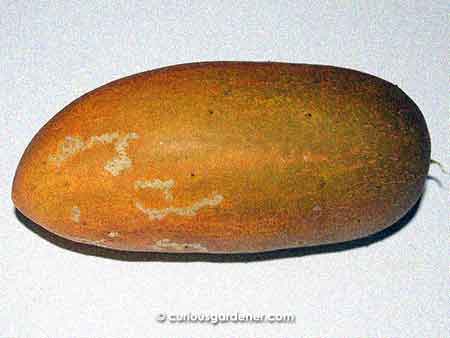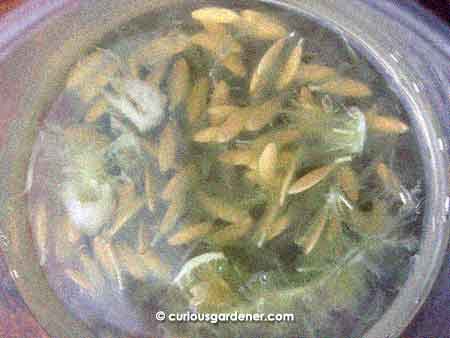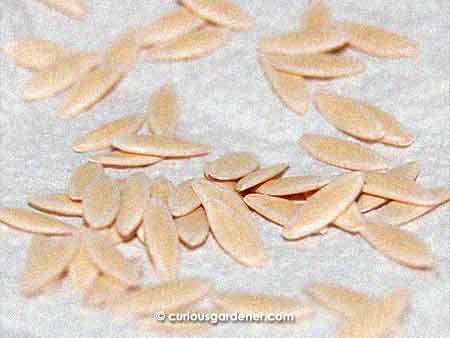Cucumber plants like to sprawl around, and in doing so, manage to hide the occasional fruit from us. The most recent escape artist succeeded in evading our palates by dangling over the side of the trough the plant is growing in, and squeezing next to another potted plant.
They are most sneaky, cucumbers…
Since the fruit was already a dark orange when I found it, I decided to keep it for seeds as my stash of seeds doesn’t seem to be very viable any more. And since I’ve discovered the joys of learning from other gardeners online, I realized that saving cucumber seeds isn’t just a matter of scooping out the seeds and sowing them, or allowing the fruit to decompose naturally in the garden and sprout new plants itself, as has happened before.
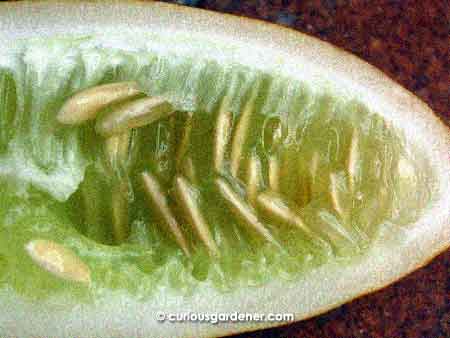
To avoid cutting into any seeds, I tried not to cut too deeply, just piercing the skin and a bit of flesh, before twisting the fruit to open it.
No, I’ve learned that to save cucumber seeds, you have to use the “wet” method. This entails scooping the seeds out of the fruit, soaking them in a small amount of warm (I assume they mean room temperature) water, and allowing them to sit and ferment for 2 to 4 days. You also have to stir them daily.
This fermentation is supposed to kill off viruses, and separates the good seeds from the bad and the pulp.
You will know it’s done when you see that seeds have sunk to the bottom while others are floating at the top with the pulp. Those on the bottom are good seeds while the pulp and bad seeds will be floating at the top. The latter are supposed to be mouldy because of the fermentation process. (Ours wasn’t, thank goodness!) Pour the bad stuff and water away, and rinse the good seeds a few times to clean them. Spread the good seeds out on a paper towel to dry for a couple of days, just to be sure they’re completely dry. If they’re still damp when you store them, they will get mouldy – which you wouldn’t want after all the trouble you’ve already gone through to save them.
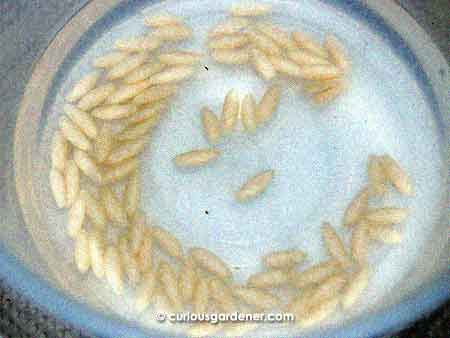
3 days after soaking the seeds, here are the “good” seeds that stayed at the bottom after the pulp and other floating debris were removed.
One source that I read suggested putting the dried seeds in the freezer for a couple of days to kill pests before storing them for the long term in a cool, dry place like the fridge. Another source mentioned that cucumber seeds stored properly can last up to 10 years!
Well, I’ve got my seeds done, hopefully properly, which ought to give me enough plants for many growing cycles.
© 2014 curiousgardener.com All rights reserved.

